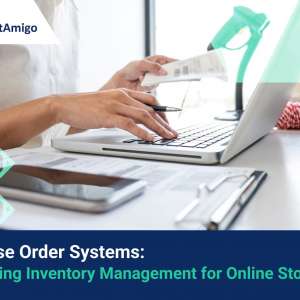Author Name: Tiffany Lee – Marketing Analyst at FreightAmigo
Credit cards can be powerful financial tools, providing convenience and flexibility for users. However, it is important to understand the limitations that come with them, particularly when it comes to credit limits. In this comprehensive guide, we will delve into the intricacies of credit limits, including how they work, how they are determined, and what happens if you exceed them. Whether you are a seasoned credit card user or new to the world of credit, this guide will equip you with the knowledge to make informed financial decisions.
Want To Compare The Best Express, Air Freight, Sea Freight, Rail Freight & Trucking Rates So As To Have Better Control On Cost?
What are Credit Limits?
A credit limit is the maximum amount of money you can charge on a revolving credit account, such as a credit card or line of credit. It represents the amount of credit that a lender grants you based on factors such as your credit history, financial information, and income. Your credit limit determines how much you can spend using your credit card or line of credit.
Credit Limit vs. Available Credit
It is important to distinguish between your credit limit and your available credit. Your credit limit is the total amount of credit extended to you by the lender, while your available credit is the remaining balance you must spend after subtracting your current balance and any pending charges. For example, if you have a credit limit of $10,000 and a current balance of $4,000, your available credit would be $6,000.
How is Your Credit Limit Determined?
Lenders use various factors to determine your credit limit. These factors include:
1. Payment History: Lenders assess whether you have a history of paying bills, including credit card bills, on time. Instances of bankruptcy or debts sent to collections may also impact your credit limit.
2. Current Accounts: The number and type of accounts you have open are considered. Lenders look at the types of loans you have, such as mortgages or auto loans, as well as the number of credit cards you possess.
3. Account History: The length of time you have held your current accounts is evaluated. Additionally, recent applications for new credit can influence your credit limit.
4. Debt: Lenders examine the amount of debt you currently owe, your credit utilization ratio, and the amount of credit available to you.
5. Income: Your income plays a crucial role in determining your credit limit. Lenders assess whether you earn enough to cover your monthly bills and debt payments.
If you are dissatisfied with your credit limit, you have the option to request a credit limit increase. In some cases, lenders may proactively adjust your credit limit based on your financial circumstances.
The Relationship Between Credit Limits and Credit Scores
Credit limits can significantly impact your credit scores, particularly through the concept of credit utilization. Credit utilization refers to the percentage of available credit you are currently utilizing. It is a crucial factor that affects your credit scores.
The Consumer Financial Protection Bureau (CFPB) recommends keeping your credit utilization rate under 30%. By having a higher credit limit, you can spend more while maintaining a low credit utilization ratio. This responsible credit utilization can positively impact your credit scores.
However, it’s important to exercise caution with higher credit limits. While they offer flexibility, they can also lead to increased debt if not managed responsibly. It’s vital to remember that credit scores are influenced by various factors, not solely credit utilization.
Going Over Your Credit Limit: Consequences and Options
Exceeding your credit limit can have significant consequences, including penalties and fees. However, different credit card issuers have varying policies regarding over-the-limit charges.
Capital One’s Approach
Capital One cardholders are not charged over-the-limit fees. Moreover, eligible cardholders may be able to exceed their credit limits under certain circumstances. Capital One provides a Confirm Purchasing Power tool that allows cardholders to check whether an overlimit purchase may be approved. Additionally, cardholders can customize their overlimit preferences to disable the ability to spend beyond their credit limit.
Other Credit Card Issuers
Other credit card issuers may handle over-the-limit situations differently. Going over your credit limit with these issuers can result in declined transactions, as well as potential fees for each billing cycle that you exceed your credit limit. It’s important to review your credit card agreement and understand the policies of your specific card issuer.
If going over your credit limit is a concern, there are several options available. You can consider applying for a credit limit increase from your current card issuer or explore obtaining a new credit card with a higher credit limit.
Integrating Credit Limits with Freight Financing
In certain industries, such as freight and logistics, credit limits play a vital role in facilitating smooth operations. FreightAmigo, a leading freight services provider, leverages the concept of credit limits to offer flexible financing options to businesses in need of freight services.
By linking FreightAmigo’s digital financing options with the credit limit of businesses, a seamless connection is established. FreightAmigo conducts credit assessments to determine the credit rating and acceptable credit limit for businesses. This credit limit acts as a foundation for offering electronic financing options such as deferred payments or installment plans to meet the funding needs associated with freight services.
The financing limits set by FreightAmigo are closely monitored based on the credit limit of businesses, ensuring that they stay within acceptable credit utilization levels. This integration provides businesses with flexible financing solutions to support their freight requirements while maintaining controlled credit usage. It fosters smooth cash flow and facilitates a convenient and sustainable collaboration between freight providers and businesses.
Conclusion
Understanding credit limits is essential for responsible credit card usage. It’s crucial to grasp the concept of credit limits, how they are determined, and the potential consequences of exceeding them. By managing your credit limits effectively, you can maintain healthy credit utilization ratios and positively impact your credit scores.
Whether you are an individual credit card user or a business seeking freight services, credit limits play a significant role in financial decision-making. By leveraging the integration of credit limits with financing options, businesses can access the necessary funds while maintaining control over their credit utilization.
Remember, credit limits are not rigid barriers but rather financial tools that, when utilized responsibly, can provide financial flexibility and convenience. By staying informed and making informed decisions, you can navigate the world of credit limits with confidence.
There Are Different Options For Cargo Transportation. If You Want To Choose The Most Convenient And Suitable Solution, It Is Best To Have The Full Support Of Logistics Experts! If You Are Planning To Ship Goods Overseas, Please Go To The FreightAmigo Page For Inquiries.
===
Read More:
Bad Debt Protection: Minimizing Losses and Managing Credit(Opens in a new browser tab)
【2021 Mid-Autumn Festival】FreightAmigo – Mooncake Overseas Delivery in the Lowest Price (Updating)
===
If you have any inquiries on logistics/supply chain, feel free to contact FreightAmigo now:
Chat with us online OR
Phone : +852 28121686
WhatsApp: +852 27467829









































